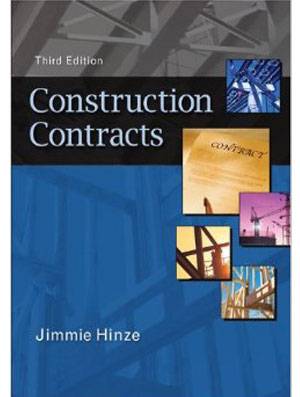Studying for the L.A.R.E. by LAN writer Erin Tharp who has recently passed the L.A.R.E. For future landscape architects, seeking initial licensure can seem like a daunting task, but by adhering to the following advise, at least the Landscape Architecture Registration Exam (L.A.R.E.) won’t seem so scary. But, before the studying begins, be sure to start a council record with the Council of Landscape Architectural Registration Boards (CLARB) and check with the state administering the exam, most have graduation and work requirements before one is allowed to sit for the L.A.R.E. So, you’ve met all of the requirements and now you’re ready to take the test, or are you? The L.A.R.E. consists of four computerized sections, and according to CLARB’s website is “designed to determine whether applicants for landscape architectural licensure possess sufficient knowledge, skills and abilities to provide landscape architectural services without endangering the health, safety and welfare of the public.”
The Main Sections of the L.A.R.E.
Section one is titled “Project and Construction Management,” two is “Inventory and Analysis,” three is “Design,” and section four is “Grading, Drainage and Construction Documentation.” While all of these may sound like topics covered in your degree program, more than likely they weren’t. And forget the pretty pictures, since the test is computerized you are not being tested on your design aesthetics, you are being tested on health, safety, and welfare. So, how do you study? First off, CLARB sells practice exams for each test, buy these, they will prove integral to your studying. The questions on the practice tests will probably not show up on the actual exams, but they will give you a clue about what to study and will also show you the format of the exams. When taking the practice exams, look for key words, such as watershed, and then learn everything you can about watersheds and what a landscape architect would need to know about a watershed as applied to health, safety, and welfare of the public. The Book List
can find most of what you’re looking for in CLARB’s list of recommended reading material. The list contains 13 books, some of which you probably had to buy for school. Hopefully you held on to them because it is imperative that you take this list seriously and read them, not necessarily every word of all of them, but at least flip through them and read the diagrams. By using these books to find the answers to the practice exam questions you’ll find yourself becoming familiar with more in-depth knowledge than you probably studied in school. Next, download the L.A.R.E. Orientation Guide, this short PDF will give you detailed information about each section and help you to understand the content of the exam. It also contains the lumber span tables and the materials lists that you will need to familiarize yourself with for sections three and four. Also found on the CLARB website is a link to the American Society of Landscape Architects’ (ASLA) website where you can find practice vignettes. If for one second you think that you don’t need these because you work in a design office and lay out parking lots and do grading plans every day, think again. CLARB is not testing you on your ability to lay out or grade a site, they are testing you on your ability to lay out and grade a site while keeping health, safety, and welfare in mind. Are you beginning to see a pattern here? So, get the vignettes from ASLA and ask around your office, more than likely you’ll find some old ones laying around, and in the end, the more practice vignettes you can become comfortable doing, the better you will do on the exam. Finally, look for crash courses that are offered around the country. Most classes will set you back a couple of hundred dollars, and while you probably feel like you’ve spent enough money at this point already, the classes are great. In addition to having a professional available to answer all your questions, you’ll also probably go home with more vignettes. So, how much time should you study? Exams are offered three times each year with four months between them, and I recommend studying for each exam for at least three months and for at least three hours each day. If you’re in a hurry to get licensed, you can take all four sections during a single exam period, or you can spread them out, but either way, be prepared to dedicate some serious time to your studies. WATCH: L.A.R.E. Demonstration In the end, you’re probably more prepared than you think you are, so just follow the advice above and try to stay calm. The path to licensure can seem to be never-ending, but when you see the word “Passed” on your record, you’ll realize that all of the hard work and money spent was completely worth it. Good luck! Recommended Reading for Studying the L.A.R.E.- Construction Contracts by Jimmie Hinze
- Basic Elements of Landscape Architectural Design by Norman K. Booth
- Landscape Architectural Graphic Standards by Leonard J. Hopper
Article written by Erin Tharp Return to Homepage Featured image: Studying: Public Domain by Gnarlycraig
Published in Blog










